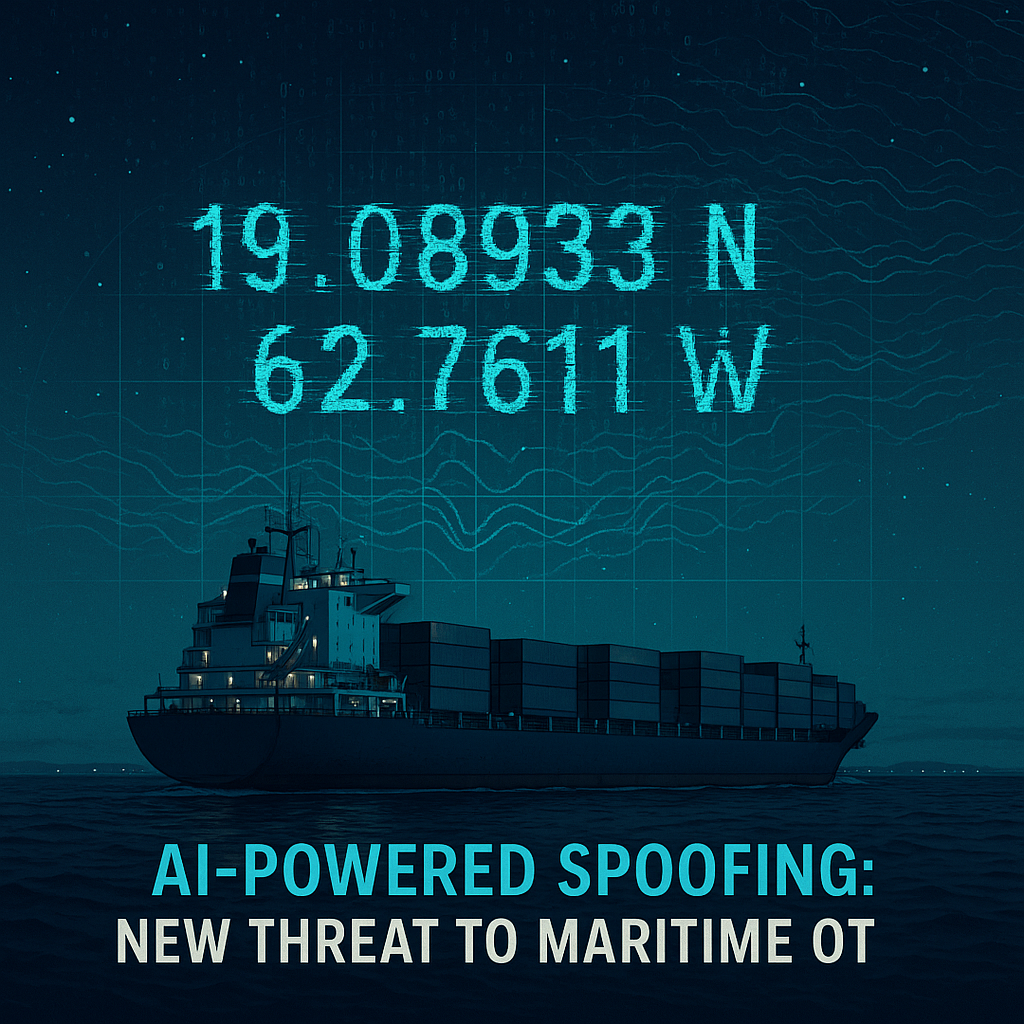New Wave of Maritime Threats: AI-Driven GPS Spoofing and OT Intrusions
AI is transforming the maritime cyber threat landscape. From advanced GPS spoofing to highly targeted Operational Technology (OT) intrusions, attackers are escalating their tactics—and maritime operators are now in the crosshairs.
This shift isn’t theoretical. It’s already impacting global shipping lanes, port operations, and vessel navigation.
Emerging Cyber Threats in 2025
Based on 2025 threat intelligence, the most concerning developments include:
- AI-powered GPS spoofing: Cyber actors are leveraging machine learning to generate hyper-realistic, undetectable fake GPS signals. These spoofed signals can redirect vessels, disrupt automated docking, or falsify positioning data.
- Zero-day OT exploits: Legacy navigation and propulsion systems are being targeted with exploits that bypass traditional detection—resulting in vessel immobilization or steering manipulation.
- Autonomous system hijacking: With more ports and vessels adopting automation, attackers are exploiting unsecured APIs, communication protocols, and sensor systems.
According to our internal threat research, GPS spoofing incidents involving commercial vessels have increased by 240% year-over-year, with many going unreported to avoid insurance or regulatory fallout.
Real-World Case: Strait of Hormuz Spoofing Cluster
In late 2024, a cluster of tankers reported navigation anomalies while crossing the Strait of Hormuz. Despite clear weather and open seas, their AIS systems displayed erratic positions. Investigators found AI-crafted spoofed GPS signals had rerouted multiple vessels, nearly causing collisions.
This event, confirmed by multiple maritime threat intelligence sources, marked the first known use of LLM-generated spoofing scripts combined with targeted OT disruption tools.
Why OT Systems Are a High-Value Target
Maritime OT systems such as:
- ECDIS (Electronic Chart Display and Information Systems)
- Integrated Bridge Systems (IBS)
- Ballast Water Management Systems
- Engine Monitoring and Control Systems
…were not originally designed with cybersecurity in mind. Many still run outdated firmware or use unencrypted communication protocols, making them ripe for exploitation. When IT and OT systems are connected without segmentation, a phishing attack on a crew member can become a direct pipeline to OT disruption.
Security Best Practices for Maritime Operators
Here’s how to defend against these evolving threats:
1. Implement GNSS Spoofing Detection
- Equip vessels with dual GNSS receivers or inertial backup systems.
- Use spoofing detection software capable of cross-referencing data anomalies.
2. Segment Your IT and OT Networks
- Apply strict VLAN configurations.
- Block unnecessary lateral movement between systems.
3. Deploy AI-Driven Threat Detection
- Leverage anomaly detection tools that understand OT behavioral baselines.
- Monitor for patterns consistent with AI-crafted spoofing attacks.
4. Update and Harden OT Firmware
- Regularly patch navigation, engine, and cargo systems.
- Replace legacy devices where updates are no longer supported.
5. Train Crews on Cyber-Awareness
- Teach bridge officers to identify spoofing symptoms.
- Establish clear incident reporting procedures onboard.
Charting a Safer Course with The Saturn Partners
The Saturn Partners helps maritime operators stay ahead of fast-evolving threats. We specialize in:
- AI threat detection tuned for low-bandwidth environments
- GPS spoofing risk mitigation and incident planning
- OT/IT segmentation and secure architecture design
- Compliance with IMO MSC.428(98), USCG, and flag state mandates
With over 20 years of cybersecurity experience and maritime-specific expertise, we deliver solutions that protect your vessels, crew, cargo, and reputation.
Ready to counter invisible threats before they strike?
Talk to our experts about building GPS spoofing resilience and securing your OT infrastructure.

